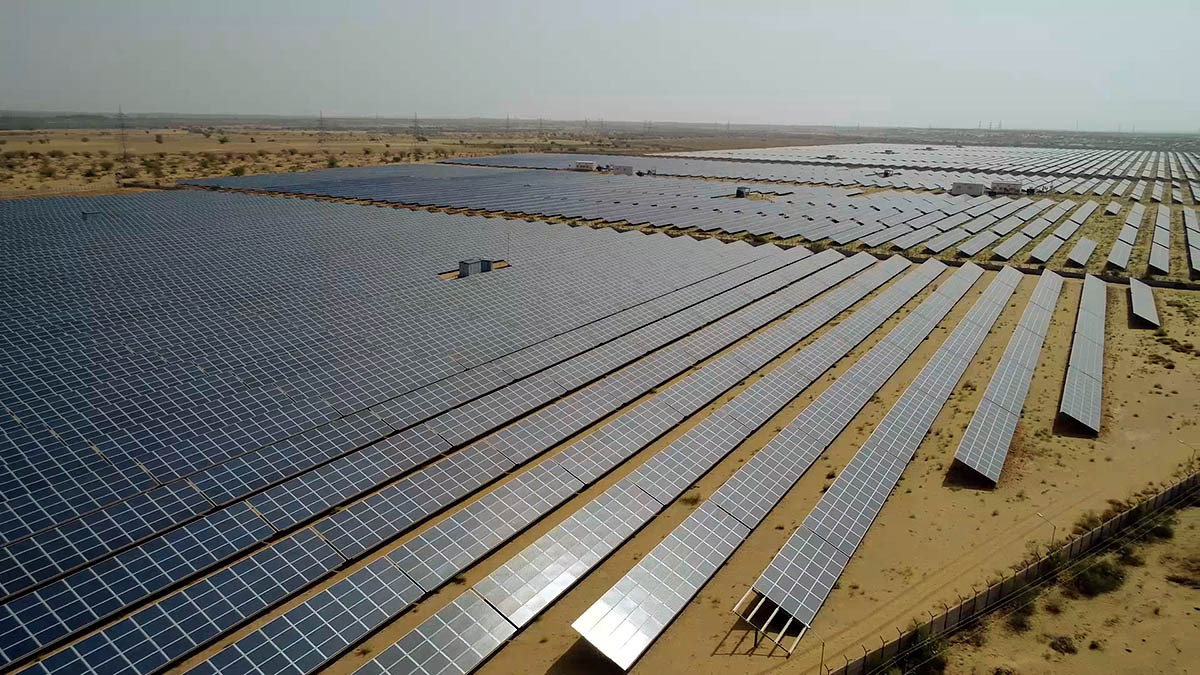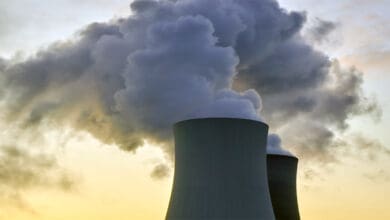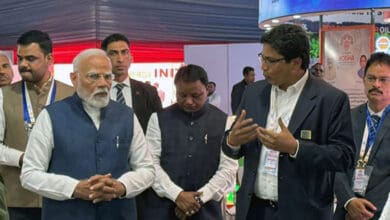-Tannistha Ganguly
Rajasthan the largest state of India and home to the Great Indian Desert, Thar. It’s population currently is estimated to be 81 million, which soon is going to cross the 100 million mark. As the fossil fuel based energy is diminishing rapidly, the state might face significant energy shortages due to increase in energy prices and energy insecurity. Now to drive down the cost and increase security, there is a very high demand for renewable energy especially after coronavirus pandemic. Solar power seems a perfect player to outplay fossil fuel and meet the energy expectations of the future.
The climatic conditions of Rajasthan make it perfect for capturing the solar rays sufficiently. Semi-arid Desert of Thar is spread on 66.66 % of landmass of Rajasthan. These condition makes it appropriate to receive nearly 300-330 sunny days a year and 5-7 kwh/m2 sun radiation per day. This is the second highest amount of sun radiation received in an area all over the world. During summers the temperature remains in the range of 33-46 degree Celsius. As per the ‘Economic review of Rajasthan 2019-20’ the installed power of Rajasthan is approximately 21 GW among the which the solar power installed capacity is 2178.10 MW which is roughly 10.3% of the total installed power.
Here we will discuss the solar potential of Rajasthan, some of the prominent initiative taken in the past and upcoming solar policies. How the Western Rajasthan is working towards development of solar energy and the challenges ahead.
Solar potential in Rajasthan
Rajasthan constitutes about 10.4% geographical area of India. The daily average solar radiation ranges from around 5kWh/m2 in north-eastern hilly areas to 7kWh/m2 in western regions. The Ministry of New and Renewable Energy (MNRE) assessment states that Rajasthan has solar potential of 142 GW. Solar power plants with 4,637 MW capacity have been commissioned in the state till December 2019.

Since the average rain fall is very low, Rajasthan is one of the best suited for solar power generation. Research says, solar radiation in Rajasthan is similar to Nevada and California in the USA. A comparative research of DNI shows, among all the desert sites across the world, the Mojave Desert in USA stands first in receiving solar radiation and Thar Desert stands second worldwide. When it comes to the solar potential, Rajasthan’s treasure is ‘Bhadla Solar Park’. The proposed total capacity of the park in phase I, II, III, IV would be 2,255 MWp. There are other solar parks such as, Phalodi – Pokaran Solar Park, Fathegarh Solar Park and Nokh Solar Park.
Solar sector initiative in Rajasthan

Nation wise the solar power industry is still in its initial stage. MNRE has specified an RE target of 14.49 GW for Rajasthan for 2022. In the joint venture (JV) dedicated to the Indian solar photovoltaic market, EDEN Renewables India, was awarded three solar photovoltaic (PV) projects for a total of 1,350 MWp each in Rajasthan.
In April 2020, NTPC brought in the ‘Vikram Solar’ for a project of 300-megawatt (MW) solar plant under the CPSU – II scheme. The firm said, “The solar plant would be spread across 1500 acres in Rajasthan and is staled to be completed in 18 months.”
Rajasthan government is asking private sector to invest in various fiscal and promotional incentives. These incentives will be given for both solar thermal and SPV projects. The government has made a project, in order to develop Jodhpur, Jaisalmer and Barmer as Solar Energy Enterprises Zone (SEEZ). Mathania solar project is a milestone as it’s India’s first solar/thermal hybrid power plant which has capacity of 140MW. This is based on the Integrated Solar Combined Cycle (ISCC) technology. It will be able to use parabolic trough mirrors to focus sun heat and further use the turbine to generate power. Though this project is stuck for few reasons, but it is expected to start off soon.
A solar energy driven refrigerator in Balesar, Jodhpur happens to be state’s first totally solar energy electrified village in Jaipur. The Rajasthan government in January, 2010 had signed a memorandum with Clinton foundation. According to the memorandum off grid installation will be done with capacities of 200MW, 400MW and 2000MW for financial year 2013, 2017 and 2022 respectively.
State RE roadmap for 2022
| Source of Power | MNRE Target (MW) | Assumed for meeting state RPO (MW) | RE Power export to other states (MW) |
| Solar | 5,762 | 4,077 | 1,685 |
As per the Solar Energy Policy 2019, Rajasthan is aiming to achieve a target of 30 GW of solar power by FY 2024-2025. Under the policy, 24 GW will be generated from utility or grid scale solar parks, distributed generation is expected to account for 4 GW, total 1 GW will be from solar rooftop, the remaining 1 GW will make up by the solar pumps. The state government is also planning to develop 33 headquarters in the districts as ‘Green Energy Cities’ within next five year by installing solar rooftop systems of 300 MW.
State’s Energy Minister B D Kalla said, “We have come up with a new solar policy in which we are giving a host of incentives, including relaxations in stamp duty, electricity duty and transmission and wheeling charges. We are also allowing banking of energy for captive consumption and third-party sale on yearly basis.”

The Western part of Rajasthan is also working well in both solar and wind energy. Solar Power in western Rajasthan got boost five years back when wind energy production just started off. In the Jaisalmer district, the solar and wind mill energy production is much higher than anticipated, varying between 130MW and 140MW. An official said, “In the last ten years, there has been no power shortage in this region with production being higher than the requirement.”
Challenges faced towards Solar Development

Rajasthan is the preferred solar power generation hub as it receives around 300 – 330 days sunny days. Difficulties arise as the array soiling loss is high for dust and Photovoltaic losses is very high due to extremely high temperature. Another problem which arises is the availability of grid, open access along with the escalating charges becoming major issue for the development of solar project in Rajasthan. It takes longer time than usual for implementation of a particular project. Also, land acquisition and statutory approvals takes more time and becomes an important reason for the delay of some projects. Niti Aayog has mentioned some of the challenges faced by the state in the ‘State Renewable Energy Capacity Addition Roadmap’:
- State Load Dispatch Centre (SLDP) does not have real-time visibility of RE generation. RE pooling sub-stations are in the process of being connected with SLDC. Funding support is an issue for State Transmission Utility (STU) to establish connectivity of pooling sub-station to SLDC.
- The state lacks balancing reserves, forcing DISCOMs to back down RE generators during low demand periods.
- Financial losses to DISCOM due to backing down of conventional power to absorb RE generation.
- Regulatory and commercial framework to develop solar wind hybrid projects is not available.













